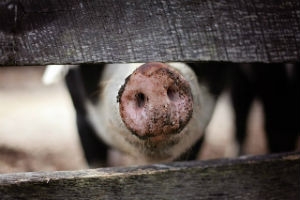You have no items in your shopping basket.
LED Lights Helping Pig Farmers Cut Costs

LED lights have a wide range of applications for many industries, a surprising one being farming. Farmers are struggling with tight margins, and with increasing costs, there’s little space to make a profit. Energy costs are one of the biggest areas that pig farmers have to consider. LED lights are a great solution for saving costs, especially for pig farmers.
Helping Pigs To See Better Can Improve Yield
Pigs may have many similarities to human biology, but our eyes are different. Humans have 3 cones at the back of the eyes, whereas pigs have 2. Pigs therefore can see some colours, but they can struggle to see specific colours on specific waves. Pigs struggle with the red and green colour spectrum.
Pigs are attracted to areas with bright light (as many mammals are) and will choose to move to an area with more light over an area with less light. Shining lights on pigs can encourage positive behaviours such increasing what they eat. This in essence means the pigs can take on more mass more quickly, allowing them to hit the target weight sooner. Even shaving a few days or weeks from one batch of pigs to the next can mean more profit for the farmer.
LED Provide Natural Day Cycles
Like humans, pigs need light cycles in order to regulate their eating and sleeping behaviours. It is well noted that shorter periods of light produce less yield. LED lights are well designed to mimic natural sunlight, and can be programmed via a control panel for the best timings. Longer periods of light can help improve feeding and growth, and encourage the pigs to have a great quality of life and welfare.
Save Energy and Save Costs
LED lights are a great solution for many businesses and organisations. Not only are they cost efficient, they are hard and durable. As a farmer with livestock it’s important to maintain cleanliness. LED lights can withstand regular cleaning and the chemicals that are needed to keep the barns and areas clean.
LED lights also have the added benefit of lasting many times longer than traditional lights, so won' tneed changing out as often. This saves time and effort for staff needing to change out bulbs in a room of livestock. This reduces stress for the animals too.
